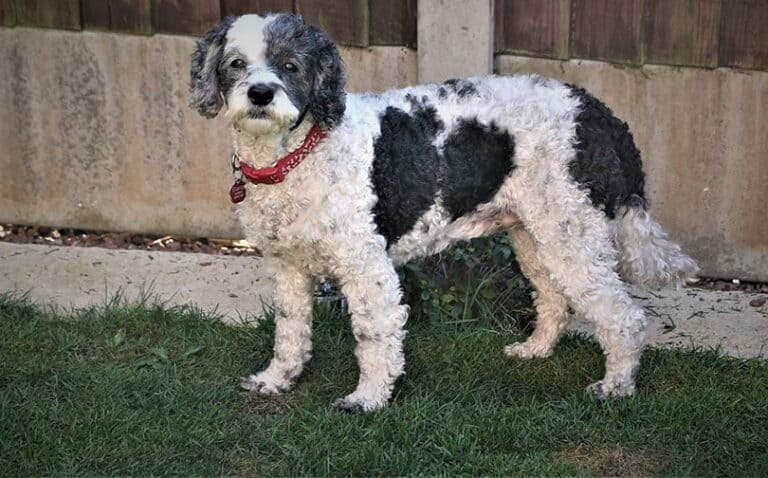Cockapoo vs Maltipoo: How Are They Different?

Designer dog breeds have grown in number and variety since their start in the 1950s, with two popular ones being the Cockapoo and the Maltipoo. Both dogs have Poodle parents, but the most significant difference lies in their other parents—the Cocker Spaniel and the Maltese. Because they have some similar parentage, these two breeds have temperaments that are similar in that they are both gentle, affectionate, and friendly.
There are some essential differences between the Cockapoo and the Maltipoo, too, though, and these differences could be a deciding factor in which of these breeds is right for you. So, how are these pups different, and which should you adopt?
Visual Differences

At a Glance
Cockapoo
- Average height (adult): 9–18 inches
- Average weight (adult): 12–24 pounds
- Lifespan: 13–15 years
- Exercise: 15–30 minutes a day
- Grooming needs: Moderate
- Family-friendly: Yes
- Other pet-friendly: Yes
- Temperament: Silly, affectionate, friendly
Maltipoo
- Average height (adult): 8–14 inches
- Average weight (adult): 5–20 pounds
- Lifespan: 12–15 years
- Exercise: 2+ hours a day
- Grooming needs: Moderate
- Family-friendly: Somewhat
- Other pet-friendly: Yes
- Temperament: Playful, cuddly, happy
Cockapoo Overview

The Cockapoo is one of the earlier designer dogs made (and possibly one of the first), as it was created (by accident!) in the 1950s. A mix between the Poodle and the Cocker Spaniel, these cute pups became a hit due to their fun natures and intelligence. And because this is a hybrid breed, you never quite know what you’ll get—your pup may take more after the Poodle or the Cocker Spaniel in both looks and personality traits.
Personality / Character
The Cockapoo has an excellent temperament and is known for being gentle, affectionate, and friendly. They form close bonds with their people; this close bond means they can become anxious and upset if they’re left on their own often, though. If not careful, this could turn into separation anxiety, which could lead to the Cockapoo engaging in destructive behaviors. This dog is definitely not for those who spend a good portion of their time outside the home!
The Cockapoo tends to be just a touch lazier than Maltipoos—this pup is more than happy being the lapdog for its favorite person. That doesn’t mean the breed isn’t energetic, though. The Cockapoo enjoys being playful and can, occasionally, be a bit hyper.
This dog is also smart (thanks to its Poodle side), which means training them should be an easier task to take on.
Grooming
You’ll need a bit of skill with grooming when it comes to the Cockapoo’s coat, as it can grow quite long. A Cockapoo with a straight coat will be easier to handle when it comes to grooming, especially since you’ll only need to brush it 2–3 times a week. Those who have the curly-coated version of this breed will find themselves needing to brush their dogs every day to avoid mats and tangles. Curly coats can make it a bit more difficult to trim as well, so you might end up needing a professional.
Other than taking care of the coat, you’ll want to check your dog’s ears regularly for cleanliness and mites, as well as trim nails every 2–3 months.

Health & Care
As a hybrid, the Cockapoo tends to be generally healthy, but like all animals, it will have a few health issues inherited from its parent that it may be more likely to get. These include:
Suitable for:
The Cockapoo is a great option for families, especially those with children, as the dog’s silly, funny personality makes it popular with the little ones. And because the breed tends to get most of its exercise through play, they don’t need tons of long walks or other such activity. So, this dog could work well if you’re not big on things like walking and hiking.
And you don’t need to worry that your Cockapoo won’t get along with other pets. This breed is very friendly with other dogs (though remember that early socialization is key!) and really doesn’t give much attention to pets like cats or smaller animals.
Maltipoo Overview

The Maltipoo is another designer dog breed, but a much newer one than the Cockapoo. It, too, has a Poodle parent, but its other parent is the Maltese. This breed has a similar fun and gentle nature to the Cockapoo, and like with the other dog, you never know what you’ll get. Your Maltipoo may resemble its Poodle or Maltese parent more in looks or temperament.
Personality / Character
Like the Cockapoo, the Maltipoo forms close bonds with its people and doesn’t do well when left to its own devices. The breed can also be a touch high-strung at times and always on alert, which can result in a lot of barking at potential threats. However, these pups are sweet, gentle, and highly affectionate. The Maltipoo is also more active than the Cockapoo (especially as a puppy), so you’ll have one playful dog on your hands! The breed is always up for a good snuggle, too, though.
The Maltipoo is also an intelligent breed, though it’s just a bit less intelligent than the Cockapoo (though not by much). That means you might end up spending a little more time in training than you would with the Cockapoo.
Grooming
The Maltipoo is similar to the Cockapoo when it comes to grooming, though their coats are a bit higher maintenance in that they require daily brushing. But when it comes to the rest of grooming, such as baths and haircuts, you’ll only need to do those once a month or so (unless they roll through a mud puddle or get otherwise filthy). The breed’s wooly coats can make haircuts more difficult than breeds with finer hair, so you may prefer going to a groomer for this dog.
Other than that, it’s the same routine of cutting toenails every couple of months and checking your dog’s ears regularly to ensure cleanliness.

Health & Care.
Because it, too, is a hybrid like the Cockapoo, the Maltipoo is fairly hardy. However, it will inherit a higher risk for a few diseases from either parent. Some of these are:
- Shaker syndrome
- Progressive retinol atrophy
- Tracheal collapse
- Patella luxation
- Legg-Calve-Perthes disease
Suitable for:
Though the Maltipoo can be an excellent choice for families, it doesn’t always work out well with smaller children. The dog is a small one, so it can be more easily scared or accidentally injured by younger children. If you have older kids, though, who know how to be careful around dogs, you should be more than fine.
And the Maltipoo will get along perfectly fine with other dogs (but make sure your dog has been properly socialized!) and should be okay with cats and smaller animals.
Which Breed Is Right for You?
Whether a Cockapoo or a Maltipoo is a better fit for you will come down to a few things, such as how active you are, how willing you are to groom, who lives in the home, and whether your family is away from home a lot. For example, neither breed does well on its own, so neither will be a good fit for those spending the majority of the day at work.
You’ll find that the Maltipoo can be a bit more active than the Cockapoo, so you’ll spend more time playing and exercising with it, so if that’s not your thing, you’ll do better with a Cockapoo. The Maltipoo’s coat may also require a bit more daily grooming than the Cockapoo, so you’ll need to consider the time you’re able to devote to that. And the Maltipoo may not do as well with smaller children as the Cockapoo.
Overall, though, both of these breeds are incredibly gentle, funny, sweet, and affectionate. If your choice comes down to personality, either breed should be a good fit.
Featured Image Credit: (L) shaymen99, Pixabay | (R) Elena Bennett, Shutterstock



